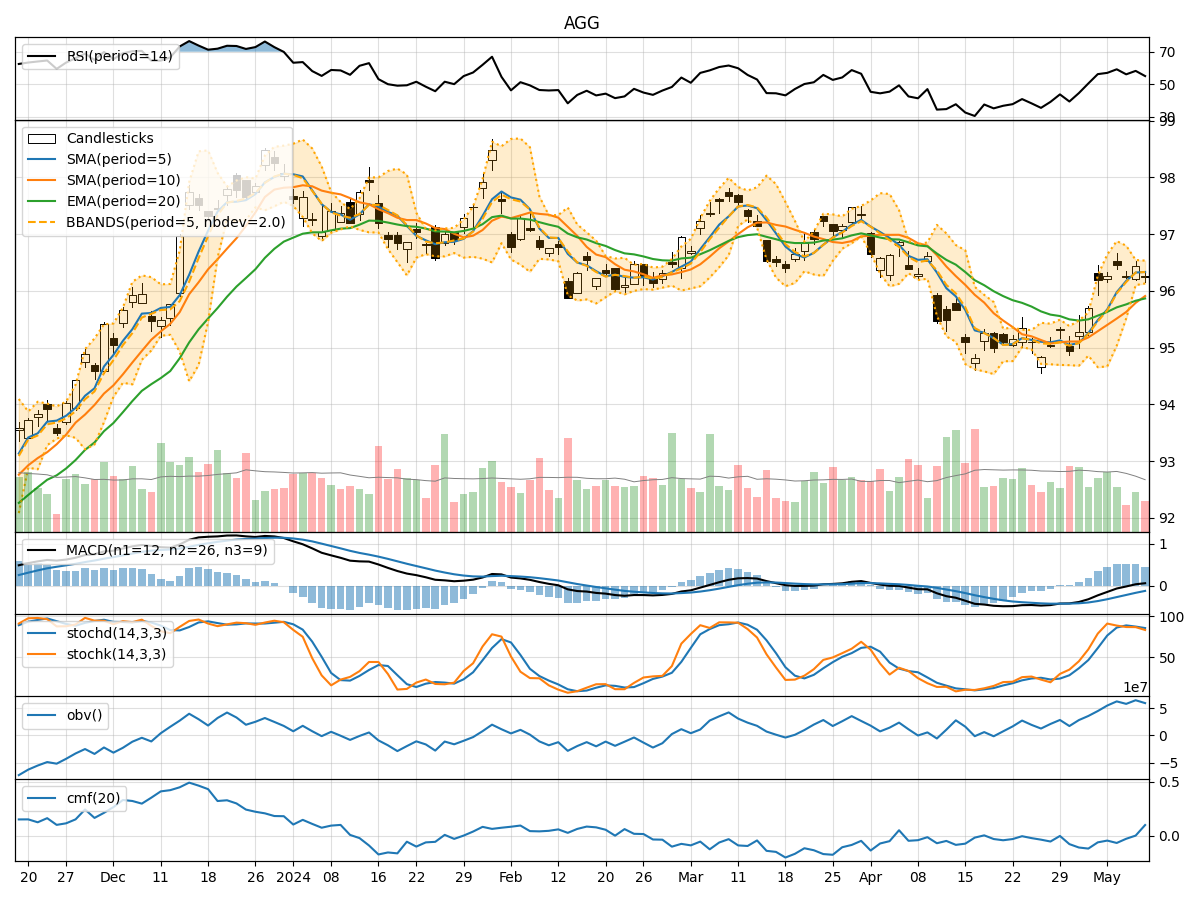
Technical Analysis of AGG 2024-05-10
Overview:
In analyzing the technical indicators for AGG over the last 5 days, we will delve into the trend, momentum, volatility, and volume indicators to provide a comprehensive outlook on the possible stock price movement in the coming days. By examining these key aspects, we aim to offer valuable insights and recommendations for potential investors.
Trend Analysis:
- Moving Averages (MA): The 5-day Moving Average (MA) has been consistently above the Simple Moving Average (SMA) and Exponential Moving Average (EMA), indicating a bullish trend.
- MACD: The MACD line has been consistently above the signal line, with both lines showing an upward trend, suggesting bullish momentum.
- RSI: The Relative Strength Index (RSI) has been fluctuating around the 50 level, indicating a neutral stance in terms of momentum.
Momentum Analysis:
- Stochastic Oscillator: The Stochastic Oscillator has been gradually decreasing but remains in the overbought territory, signaling a potential reversal or consolidation.
- Williams %R: The Williams %R indicator has been consistently in the oversold region, suggesting a bearish sentiment.
Volatility Analysis:
- Bollinger Bands (BB): The stock price has been trading within the Bollinger Bands, with the bands narrowing, indicating decreasing volatility.
- Average True Range (ATR): The ATR has shown a decline, further supporting the decrease in volatility.
Volume Analysis:
- On-Balance Volume (OBV): The OBV indicator has been fluctuating, indicating a balance between buying and selling pressure.
- Chaikin Money Flow (CMF): The CMF has been negative, suggesting a slight outflow of money from the stock.
Conclusion:
Based on the analysis of the technical indicators, the stock price of AGG is likely to experience sideways movement in the next few days. The trend indicators suggest a bullish bias, supported by the MACD and moving averages. However, the momentum indicators, particularly the Stochastic Oscillator and Williams %R, indicate a potential reversal or consolidation in the near term. The volatility indicators point towards decreasing volatility, which aligns with the expected sideways movement. The volume indicators show a balanced buying and selling pressure, further supporting the sideways outlook.
In conclusion, while there are bullish signals in the trend indicators, the momentum indicators suggest caution, and the overall market sentiment appears to be neutral. Therefore, investors should closely monitor the price action and key support/resistance levels for potential trading opportunities.